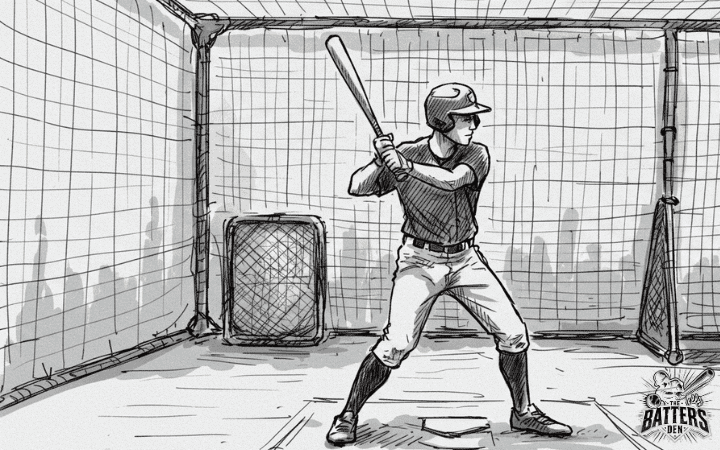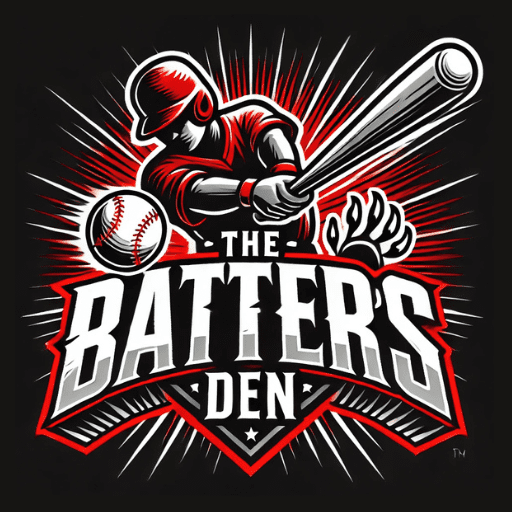
Step into the batter’s box. The pitcher winds, the arm comes forward, and in a fraction of a second, you have to decide: Swing? Take? Where is this pitch going? Hitting a baseball or softball is one of the hardest things to do in sports, and a huge part of that challenge lies in pitch recognition. It’s that critical ability to see the ball early, identify what kind of pitch it is, predict its path, and make the right swing decision.
Here at The Batter’s Den, we see players working tirelessly on their swing mechanics, building strength, and perfecting their footwork. That’s essential! But we also know that the sharpest swing in the world won’t connect if your eyes aren’t feeding your brain the right information. The good news? Pitch recognition isn’t some mystical talent you’re either born with or not. It’s a skill, and like any skill, it can be honed and dramatically improved with focused practice. Our core belief hangs on the wall: ‘With repetition comes results!’ That goes for training your eyes just as much as training your swing.
Why Sharper Eyes Mean a Sharper Bat
Think about it: what happens when you recognize a pitch earlier and more accurately?
- Better Timing & Contact: Seeing the ball clearly out of the hand allows your internal timing mechanism to sync up properly. You’re less likely to be fooled by off-speed pitches or caught off guard by high velocity, leading to more solid contact.
- Smarter Swing Decisions: Is that curveball actually going to be a strike, or will it drop out of the zone? Is that fastball on the black or way outside? Good pitch recognition lets you lay off the pitcher’s pitches and attack the ones you can drive. Fewer strikeouts, more walks, and hitting your pitch – that’s the goal!
- Skyrocketing Confidence: Imagine stepping into the box knowing you have the tools to see what’s coming. Guesswork disappears, replaced by focused anticipation. This confidence radiates through your entire game.
Better pitch recognition gives you, the hitter, more control over the at-bat. You stop reacting defensively and start dictating the terms.
Actionable Drills: Training Your Vision (Cage Time!)
The batting cage is your laboratory for visual training. It offers a controlled environment where you can isolate specific skills and get the crucial repetitions needed for improvement. Here are drills you can start implementing today at The Batter’s Den:
Lock On the Release Point
- WHY: This trains your eyes to pick up the ball at the earliest possible moment.
- WHAT TO DO: As the pitcher (or machine) begins their motion, glue your eyes to the specific spot where the ball will emerge – the release window. Don’t follow the whole windup; focus intensely on that release point. Your first job isn’t to hit, it’s simply to see the ball the instant it appears.
- CAGE APPLICATION: Set up in one of our cages. For the first few minutes, don’t even swing. Just stand in your stance and track the ball from the machine’s release point all the way into the net. Force yourself to see it clearly from start to finish. As you get better, start calling out “Ball” or “Strike” based on where you anticipate it crossing the plate, making the call as early as you can.
Decode the Spin
- WHY: Identifying the pitch type early is crucial for adjusting your timing and swing path. Different spins tell different stories.
- WHAT TO DO: Immediately out of the hand or machine, hunt for the seams and the spin. Look for the visual cues:
- Tight backspin or sidespin (often looks like a blur with maybe seams visible) = Fastball.
- Loopy, slower rotation, often with seams tumbling forward = Curveball.
- Tight, fast spin that looks like a small red dot (from the seams) or flatter spin = Slider/Cutter.
- Less distinct spin, maybe a tumbling look, often appearing slightly slower = Changeup.
- CAGE APPLICATION: Use one of our machines that throws breaking balls, or have a coach/partner feed different Wiffle ball pitches (they exaggerate spin beautifully!). Your only task for this drill is to call out the pitch type (“Fastball!” “Curveball!”) as soon as you recognize the spin. Don’t worry about location or hitting yet – just decode that rotation!
Own the Zone
- WHY: Knowing if a pitch will be in the strike zone, and where in the zone, is fundamental to good swing decisions.
- WHAT TO DO: Mentally divide the strike zone into sections – maybe high/middle/low and inside/middle/away (creating 9 zones). As the pitch travels, track its trajectory and predict which zone it will enter.
- CAGE APPLICATION: Take pitches without swinging. As the ball crosses the plate area, call out the location zone it passed through. Examples: “Belt high, middle!” “Low and away!” “High inside!” This forces you to track the pitch completely and make precise location judgments.
Master Mixed Speeds
- WHY: Hitters rarely face the exact same velocity pitch after pitch. Training your eyes and brain to adjust quickly is key.
- WHAT TO DO: Intentionally practice recognizing and timing different pitch speeds.
- CAGE APPLICATION: If the machine allows, have someone randomly vary the speed setting between pitches. If not, dedicate different rounds in the cage to specific speeds – maybe one round at 60 mph, the next at 70 mph, then back to 60 mph. The goal is to force your visual system to recalibrate constantly, preventing you from just grooving a swing based on one expected speed.
Sharpen Your Vision Beyond the Cage
Your visual training doesn’t stop when you leave The Batter’s Den!
- Game Watching with Purpose: Don’t just spectate! When watching baseball or softball (live or on TV), put yourself in the batter’s shoes. Actively try to identify the pitch type and location right out of the pitcher’s hand. Pause and rewind if you need to. Talk it through: “Okay, saw that spin, looked like slider away…”
- Simple Eye Tracking: You can do this anywhere. Practice following a moving object (like the tip of your finger) smoothly with just your eyes – side-to-side, up-and-down, towards and away. Keep your head still. These simple exercises build the fine motor control of your eye muscles.
The Batter’s Den: Your Pitch Recognition Gym
Why is the cage environment so valuable for this? It allows you to get consistent, high-volume repetitions focused solely on visual skills, away from the pressures and variables of a live game. You can isolate spin recognition, zone tracking, or release point focus without worrying about base runners or game situations.
Make these drills a non-negotiable part of your training routine. Spend just 5-10 minutes at the start of every cage session dedicated purely to visual work. Warm up your eyes just like you warm up your muscles.
See It, Hit It!
Improving your pitch recognition isn’t a quick fix, but it’s one of the most impactful investments you can make in your hitting. Stop hoping you see the ball well and start training to see it well. It takes discipline and focus, but the payoff in confidence and performance is undeniable.
Come down to The Batter’s Den. Grab a cage, pick a drill, and get to work. Focus your eyes, train your brain, and unlock that next level of hitting potential. Remember, with repetition comes results. Let’s get those eyes sharp!

